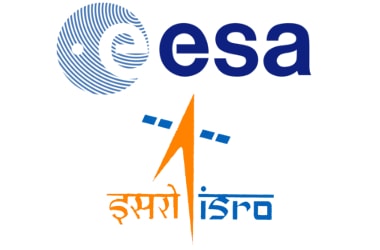
While the European Space Agency (ESA)'s Gaia satellite mission is on its multi-dimensional space probe, mapping a billion stars in the Milky Way Galaxy, ESA's Senior Scientific Advisor Mark McCaughrean reveals ESA's plan for further collaboration with Indian Space Research Organisation (ISRO) in space missions.
On ISRO's historic launch of 104 satellites at one go, he says it's the precision in placing satellites and cost reduction.
ESA is planning 15 space missions including Bepe Colombo to Mercury in 2018 and JUICE to Jupiter in 2022.
Earlier, ESA had collaborated with ISRO on Chandrayaan-1 mission to Moon.
In its space mission, ESA has collaborative efforts with 22 countries including the US, Russia, China, India and Japan.
It is expected to increase with the commercial launches.
ON ESA's plan for 15 space missions, the Bepe Colombo will be the first probe to Mercury in 2018.
It is a joint mission between ESA and Japan Aerospace Exploration Agency (JAXA) and the Sun's enormous gravity poses a challenge to place the spacecraft into a stable orbit around Mercury.
Then, the ambitious Jupiter Icy moons Explorer (JUICE) to Jupiter in 2022.
The explorer will spend at least three years making detailed observations of the giant gaseous planet Jupiter and three of its largest moons–Ganymede, Callisto and Europa.
The ice crust is much deeper and there may be forms of life in these moons.
Missions to Neptune and Uranus haven't been planned yet as it would take about 20 to 30 years to reach there, he said.
To probe the possibility of life on other planets, humans have begun space exploration since the first human spaceflight of Russia in 1961 and now plans are afoot by NASA and SpaceX to colonise Mars to help humanity establish a permanent colony in Mars in the next 50 to 100 years.
On ESA's human space flight to Mars, he said it could be after 10 to 20 years. Now it plans robotic exploration to Mars with NASA.
ESA Gaia & Other Missions: Know More- It ambitious space mission to scan a six-dimensional map of our Milky Way galaxy of about one billion stars, which is about one percent of the Galactic stellar population.
- ESA is also preparing for Euclid mission to observe billions of galaxies, to map and measure dark matter and dark energy which constitutes roughly about 80 percent of the mass of the Universe.
- Studies on dark matter reveal that the universe today is expanding faster than in the past.
- Such expansion is possible only if the universe contained enough energy to overcome gravity.
- ESA has a program to build a gravitational wave detector by 2030, it's the Laser Interferometer Space Antenna (LISA) mission to observe and measure gravitational waves directly by using laser interferometry.